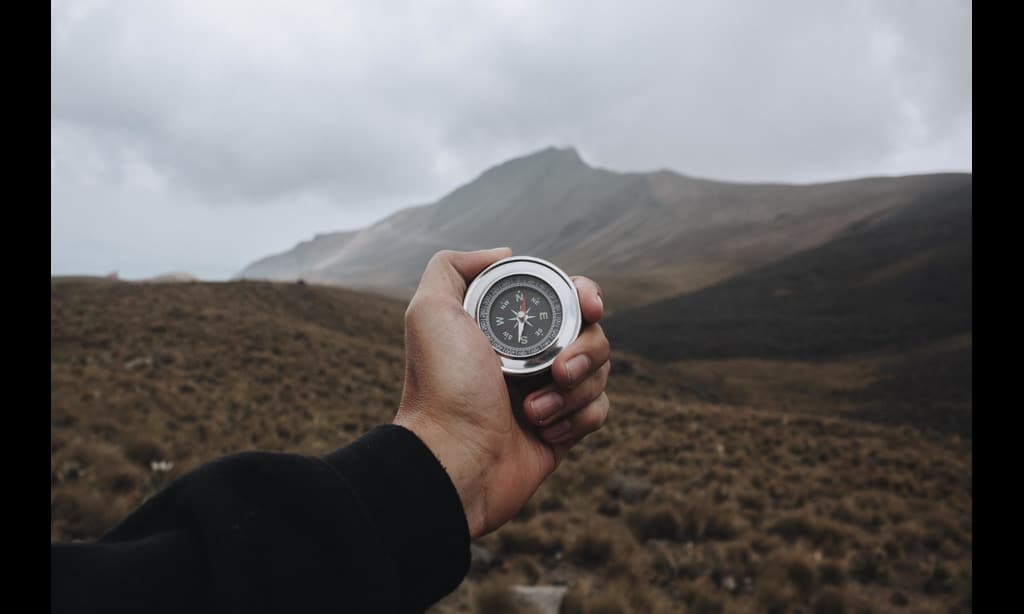Navigating the intricacies of time zones like Mountain Standard Time (MST) can be daunting. MST plays a significant role in our daily schedules and routines, spanning multiple states and regions.
This comprehensive guide provides everything needed to understand, adapt to, and efficiently manage your time in the MST zone. Ready for a timely exploration?
Content Highlights
- Mountain Standard Time (MST) is a time zone observed in certain regions and states within the United States, including Arizona, Colorado, and Utah. It is seven hours behind Coordinated Universal Time (UTC).
- MST differs from other time zones such as Eastern Standard Time (EST), Central Standard Time (CST), Pacific Standard Time (PST), Alaska Standard Time (AKST), Hawaii-Aleutian Standard Time (HAST), and Atlantic Standard Time (AST) by varying time differences.
- Daylight Saving Time (DST) affects MST, with clocks being set forward by one hour starting March 12, 2023. DST ends on November 5, changing the time difference between MST and other time zones.
- Understanding the history of MST provides insights into its establishment as a standard time zone in North America during the late 19th century. Over time, boundary shifts, DST implementation changes, legislative proposals, international variations, and technological advancements have shaped MST’s observance.
What is Mountain Standard Time (MST)?
Mountain Standard Time (MST) is a time zone observed in certain regions and states within the United States, including Arizona, Colorado, and Utah.
Definition of MST
Mountain Standard Time, abbreviated as MST, represents a specific time zone seven hours behind the Coordinated Universal Time (UTC). This means when you encounter times labeled as MST, they refer to a time slot that is UTC -7:00.
A significant part of North America adheres to this timezone during standard time. Regions such as Arizona, Saskatchewan, and Chihuahua frequently use Mountain Standard Time in daily activities.
This major global timezone remains crucial for those traveling or conducting business within its boundaries. Crucial in understanding time conversions across different zones, Mountain Standard Time plays an undeniable role worldwide.
Time Zone Boundaries
The Mountain Standard Time Zone outlines a specific segment of North America. This region, distinguished by its unique time setting, encompasses varying parts of the United States and beyond:
- Moving from East to West, the Mountain Standard Time boundary begins at the western edge of central South Dakota.
- This boundary then extends down through the central sections of Wyoming and Colorado.
- Continuing southward, it flows along the eastern border of New Mexico.
- Arizona operates under MST except for Navajo Nation, which participates in Daylight Saving Time.
- Canadian regions like Alberta, northeastern British Columbia, part of Nunavut, and northwest Territories also observe mountain time.
- In Mexico, Chihuahua is a notable state that follows this time zone.
Difference from Other Time Zones
Mountain Standard Time (MST) distinguishes itself from other time zones in various ways. The following table highlights the differences between MST and other prominent time zones in the United States and Canada.
|
Time Zone |
Difference from MST |
|
Eastern Standard Time (EST) |
MST is typically 2 hours behind EST. |
|
Central Standard Time (CST) |
MST is typically 1 hour behind CST. |
|
Pacific Standard Time (PST) |
MST is typically 1 hour ahead of PST. |
|
Alaska Standard Time (AKST) |
MST is typically 2 hours ahead of AKST. |
|
Hawaii-Aleutian Standard Time (HAST) |
MST is typically 3 hours ahead of HAST. |
|
Atlantic Standard Time (AST) |
MST is typically 3 hours behind AST. |
These differences are crucial to consider when coordinating activities across different regions. Moreover, online converters are available to help with this time conversion task.
Daylight Saving Time (DST) in MST
Daylight Saving Time (DST) in MST starts on March 12, 2023, at 2:00 am when clocks “spring forward” by one hour, and ends on November 6, 2022, after approximately 4.5 months during the winter season.
Start and End Dates of DST in MST
Daylight Saving Time (DST) in Mountain Standard Time (MST) begins on Sunday, March 12 at 2:00 A.M. During DST; clocks are “sprung forward” by one hour, resulting in longer daylight hours.
This change is made to use natural light better and reduce energy consumption. DST in MST ends on November 5 when clocks are “fallen back” by one hour to return to standard time.
It’s important to mark these dates on your calendar as they affect the time difference between Mountain Standard Time and other time zones.
Impact of DST on MST
Daylight Saving Time (DST) significantly impacts Mountain Standard Time (MST). During DST, which typically starts in the spring and ends in the fall, clocks are set forward by one hour.
This means that MST moves ahead one hour, shifting its time relative to other time zones. The purpose of DST is to make better use of daylight during the warmer months.
The impact of DST on MST can be felt in various ways. First, it affects scheduling and coordination with other time zones. As some states within the Mountain Time Zone observe DST while others do not, there can be disparities in timing for activities like meetings or travel arrangements.
It’s important to stay updated on which states observe DST and adjust schedules accordingly.
Secondly, adjusting to the time change caused by DST can affect sleep patterns and daily routines. Losing an hour of sleep when transitioning into DST may lead to temporary disruptions in sleep quality or feelings of fatigue.
Read More: The Ultimate Insider’s Guide to Navigating What Time is it in Texas
History of Mountain Standard Time
Mountain Standard Time (MST) has a rich history that dates back to its origins and has seen changes and adjustments over time.
Origins of MST
The origins of Mountain Standard Time (MST) can be traced back to the establishment of standard time zones in North America in the late 19th century. As rail transportation expanded across the continent, it became necessary to establish a unified system for organizing schedules and coordinating time.
The Mountain Time Zone was designated as one of these standard zones, with MST as its corresponding time during standard time. Since then, MST has been crucial in ensuring efficient communication and synchronization within its regions, including Arizona, Colorado, Wyoming, and parts of Canada.
MST is a reference point for millions living or traveling through these areas today.
Changes and Adjustments Over Time
Over time, Mountain Standard Time (MST) has undergone various changes and adjustments. Here are some key developments:
- Historical shifts: Since its inception, MST has experienced alterations in its boundaries and observance. Population growth, political decisions, and the need for standardized timekeeping have prompted these changes.
- Daylight Saving Time implementation: Like other time zones, MST has had to adapt to the practice of Daylight Saving Time (DST). DST’s start and end dates have been modified to accommodate energy conservation efforts and regional preferences.
- Legislative proposals: Several states within the Mountain Time Zone have considered measures that would impact the standardization of time. For example, Colorado has proposed transitioning to year-round Mountain Daylight Time instead of adhering to MST throughout the year.
- International variations: It’s worth noting that even within the Mountain Time Zone, there can be differences in how MST is observed in different regions or countries. For instance, Mexico recently changed the display name of its “Mountain Standard Time (Mexico)” zone.
- Technological advancements: With the increasing reliance on technology for communication and scheduling, managing time differences has become more accessible. Various tools and resources help individuals efficiently convert between MST and other time zones.
Current Observance of MST
States and regions that observe Mountain Standard Time include Arizona, which currently follows MST throughout the year, and parts of Colorado, Montana, New Mexico, Utah, and Wyoming.
States and Regions that Observe MST
The Mountain Standard Time (MST) zone is observed in several states and regions across North America. Here are the areas that follow MST:
- Arizona: The entire state of Arizona observes Mountain Standard Time throughout the year without observing Daylight Saving Time.
- Colorado: Most of Colorado is in the Mountain Time Zone and follows MST. However, some counties in the state’s northwest corner, such as Moffat and Jackson counties, are on Mountain Daylight Time (MDT) during DST.
- Kansas: In Kansas, three counties in the southwestern part of the state – Greeley, Hamilton, and Sherman – follow MST.
- Montana: Most of Montana uses MST; however, a few exceptions exist. Some parts of western Montana near Idaho switch to Pacific Standard Time (PST) during DST.
- New Mexico: The central and western parts of New Mexico adhere to MST, while the eastern region follows Central Standard Time (CST).
- Utah: Most of Utah is on Mountain Standard Time, except for two counties – Daggett and Uintah – which use Mountain Daylight Time during DST.
- Wyoming: Wyoming predominantly observes MST across its entire state.
- Alberta (Canada): The province of Alberta in Canada follows MST year-round without observing DST.
- British Columbia (Canada): A small portion of southeastern British Columbia follows MST instead of Pacific Standard Time during standard time.
Exceptions and Variations Within MST
Despite Mountain Standard Time being primarily characterized by its offset of UTC -7:00, there are certain exceptions and variations within this time system. Factors such as geographical location, political decisions, and cultural norms often lead to differences in how MST is observed.
|
Location |
Exception/Variation |
Explanation |
|
Navajo Nation |
Observes DST |
Unlike most regions in Arizona that do not observe daylight saving time, Navajo Nation does switch to DST due to its large landmass spanning multiple states. |
|
Arizona |
Does not observe DST |
Arizona, except for the Navajo Nation, does not observe daylight saving time, aligning with MST year-round. |
|
Parts of Indiana |
Inconsistent DST observance |
Until 2006, parts of Indiana did not observe DST. Now, the entire state observes DST, despite having locations in multiple time zones. |
|
Sonora, Mexico |
Aligns with Arizona |
Unlike the rest of Mexico, Sonora does not observe DST, aligning its time with Arizona to facilitate cross-border economic activities. |
These exceptions and variations serve as a reminder that timekeeping isn’t strictly a scientific endeavor. Economics, politics, and culture affect how we track and measure time.
Benefits and Challenges of Mountain Standard Time
Mountain Standard Time (MST) offers the benefits of a consistent time zone, providing stability and predictability for residents and businesses in the region. However, coordinating with other time zones can present challenges that require effective communication and scheduling strategies.
Benefits of Consistent Time Zone
Consistency in time zones, such as Mountain Standard Time (MST), offers several benefits. First and foremost, it ensures clear communication and coordination across regions. With everyone operating on the same clock, scheduling meetings, conference calls, or social events becomes easier and less confusing.
It eliminates the need for constant conversions between different time zones.
Another advantage is that a consistent time zone like MST helps streamline transportation systems. Airlines, trains, and buses can adhere to fixed departure and arrival times without considering multiple time changes along their routes.
This enhances efficiency and reliability for both travelers and transport providers.
Furthermore, businesses operating within a consistent time zone can enjoy improved workflow management. Having synchronized work hours facilitates collaboration between teams in different areas within the Mountain time zone.
It also allows for better alignment with clients or partners from other regions with overlapping working hours.
Challenges of Coordinating Across Time Zones
Coordinating across time zones can be challenging, requiring careful planning and communication. One of the main challenges is the difference in working hours and availability.
When one team is just starting their day, another may be getting ready to wrap up. This creates a limited window for collaboration, leading to delays in decision-making or project progress.
Another challenge is language barriers and cultural differences that come into play when working with teams from different time zones. Communication may become more difficult due to language nuances or varying work practices.
Establishing clear communication lines and ensuring everyone understands expectations and deadlines is important.
Additionally, technical challenges may be when scheduling meetings or coordinating activities across different time zones. It’s crucial to have access to reliable tools for scheduling, such as shared calendars or meeting planners, that accommodate various time zones seamlessly.
Read Also: The Ultimate Guide to Navigating What Time Is It in Florida
Adjusting to Mountain Standard Time
Adjusting to Mountain Standard Time can be challenging, but there are a few tips to make the transition smoother.
Tips for Adjusting to MST
Adjusting to Mountain Standard Time (MST) doesn’t have to be a difficult process. Here are some tips to help you smoothly transition:
- Plan: Adjust your schedule accordingly before traveling to an area that observes MST. Research the time difference and plan your activities and appointments accordingly.
- Gradually adjust your sleep schedule: If possible, start adjusting your sleep schedule a few days before you travel or switch time zones. Gradually shift your bedtime and wake-up time closer to the local MST schedule.
- Stay hydrated: Drinking enough water can help combat fatigue and jet lag. Stay hydrated before, during, and after your trip or when adjusting to MST.
- Get natural light exposure: Spend outside during daylight hours to help regulate your body’s internal clock. Exposure to natural light can help you adjust more quickly.
- Avoid caffeine and alcohol close to bedtime: Both caffeine and alcohol can disrupt sleep patterns. Avoid consuming these substances before bedtime if you have trouble adjusting to MST.
- Use technology tools for time conversion: Utilize online converters or smartphone apps that can accurately convert times between different time zones, including MST.
- Set reminders for important events: Due to the time difference, it’s essential not to forget any important appointments or deadlines in MST. Set reminders on your phone or computer so you don’t miss anything.
- Stay active during the day: Keeping active can help you stay alert and adjust to the new time zone. Engage in physical activities such as walking or exercising regularly.
- Stick to a routine: Establishing a daily routine helps signal your body when it’s time for certain activities like eating meals or winding down for bed. Stick with a consistent routine even when adjusting to MST.
- Be patient: Adjusting to a new time zone takes time, so be patient with yourself. It’s normal to feel a bit off initially, but eventually, your body will adapt to the MST schedule.
Effects on Sleep and Daily Routines
Changing from daylight saving time to standard time can significantly impact sleep patterns and daily routines. Studies have shown that the transition, where one hour is gained overnight, can disrupt sleep quality and overall well-being.
This adjustment affects our internal clocks, influences our appetite, and focus, and even increases the risk of heart attack or stroke. In addition to these physical effects, changing clocks and seasons can also throw off our daily routines, making it challenging to adjust to new schedules and maintain a consistent sleep schedule.
Individuals must be aware of these effects and take necessary steps to mitigate any negative impacts on their sleep and daily activities.
Time Conversion and Timekeeping in MST
You can use online tools and resources specifically designed for time conversion to convert time in Mountain Standard Time (MST) to other time zones.
Tools and Resources for Time Conversion
To help you with time conversion in the Mountain Standard Time (MST) zone, here are some tools and resources you can use:
- World Clock Websites: Websites like timeanddate.com or worldclock.com provide easy-to-use converters for different time zones. Simply input the MST time and find out what it corresponds to in other zones.
- Smartphone Apps: Several apps, such as Time Buddy or World Clock Time Zone Converter, allow you to convert time zones on your mobile device. These apps often have additional features like setting reminders or scheduling events across time zones.
- Online Time Zone Converters: Various online converters are available where you can select the desired time zone and enter MST as the reference zone. These tools will instantly display the corresponding times in other zones.
- Zulu Time Conversion: If you need to coordinate activities for military or navigation purposes, using Zulu time conversion is essential. Converters specifically tailored for Zulu time are easily accessible online.
- Communication and Collaboration Tools: Platforms like Slack, Google Calendar, or Microsoft Outlook offer built-in features to convert event times across different time zones. Take advantage of these tools to ensure effective communication and scheduling with colleagues or clients in other regions.
- International Time Conversion Charts: Many resourceful websites provide comprehensive charts displaying multiple time zones’ conversions side by side. This allows you to compare MST with various other common time zones quickly.
Tips for Managing Time Differences in MST
Managing time differences in MST can be challenging, but with these helpful tips, you can navigate through it smoothly:
- Plan: When scheduling meetings or appointments with individuals in different time zones, always double-check the time difference between MST and their respective time zone. Use reliable time zone converters or online tools to ensure accuracy.
- Be mindful of daylight saving time: MST observes daylight saving time (DST). Take note of DST’s start and end dates in MST to avoid confusion and adjust your schedules accordingly.
- Communication is key: Communicate the specific time zone you reference when setting up appointments or discussing deadlines. This helps to avoid any misunderstandings caused by assuming everyone is on the same page.
- Use digital calendars: Utilize digital calendar tools that allow you to add multiple time zones for easy reference. This way, you can quickly compare MST with other time zones without manually calculating the differences.
- Be flexible with meeting times: If possible, try to find mutually convenient meeting times for all parties involved, considering their respective time zones. Being accommodating can foster effective collaboration across different regions.
- Set reminders: Set reminders for important events or meetings so you don’t miss them due to the time difference. Incorporate notifications into your routine to stay on top of scheduled activities in MST.
- Consider overlap hours: Identify any overlapping working hours between your schedule and individuals in different time zones to maximize productivity and minimize delays in communication.
- Understand cultural differences: Consider cultural norms regarding working hours and availability in different regions. Respect these differences when planning interactions with colleagues or clients in MST or other time zones.
- Maintain clear communication channels: Ensure that there are established channels for quick communication between team members across various locations and time zones. This could include instant messaging platforms or project management tools that allow real-time collaboration.
- Stay organized: Keep track of important deadlines, meetings, and time-specific tasks using a task management system or personal planner. This helps you stay organized and prioritize your responsibilities despite the time differences.
Mountain Standard Time and Technology
Mountain Standard Time (MST) significantly impacts technology and communication, requiring individuals and businesses to manage time differences and coordinate across various time zones effectively.
Impact of MST on Technology and Communication
Mountain Standard Time (MST) significantly impacts technology and communication, especially for teams across different time zones. With MST being 7 hours behind Coordinated Universal Time (UTC), it requires effective coordination and collaboration to ensure smooth workflows.
Modern communication tools like Slack and Zoom have made this process easier.
Teams can utilize platforms like Zapier to manage work efficiently across multiple time zones, ensuring everyone stays connected and productive. This is particularly important when scheduling meetings or deadlines, as understanding the time difference becomes crucial.
By leveraging these technological solutions, teams can overcome the challenges of working in different time zones while maintaining effective communication.
Moreover, MST’s impact on technology goes beyond team collaboration. It also affects various industries that rely on accurate timing, such as transportation and logistics companies.
Military and navigation sectors often use Zulu time as a reference point to avoid confusion with time zone differences among regions.
Read More: Stay Ahead with our Latest Guide to UTC Time Zone
Time Management Tools for MST
To effectively manage your time in the Mountain Standard Time (MST) zone, several tools are available to help you stay organized and on schedule. Here are some essential time management tools for MST:
- Calendar Apps – Utilize digital calendar apps like Google Calendar or Microsoft Outlook to keep track of your appointments, meetings, and deadlines. Set reminders and notifications to ensure you stay on top of your schedule.
- Time Tracking Software – Use time tracking software such as Toggl or RescueTime to monitor how you spend your time throughout the day. This can help identify areas where you may be wasting time or need improvement in managing tasks.
- Task Management Tools – Stay organized using tasks like Asana or Trello. Create task lists, set due dates, and assign priorities to ensure nothing falls through the cracks.
- Pomodoro Technique – Employ the Pomodoro Technique to enhance productivity. Set a timer for 25 minutes of focused work and a 5-minute break. Repeat this cycle three times and then take a longer break before starting again.
- Time Zone Converters – Use online time zone converters such as TimeAndDate.com or WorldTimeBuddy.com to easily convert MST to other time zones when scheduling meetings or coordinating with colleagues in different regions.
- Digital Note-taking Apps – Keep track of ideas, important information, and tasks using Evernote or Microsoft OneNote. These apps allow you to organize your notes digitally and access them from multiple devices.
- Task Automation Tools – Streamline repetitive tasks using automation tools like Zapier or IFTTT (If This Then That). These tools can save time by automatically performing actions based on specified triggers.
- Email Management Tools – Take control of your inbox using tools like Boomerang or SaneBox. These tools can help you prioritize emails, schedule email reminders, and categorize messages for better organization.
- Online Collaboration Platforms – When working with remote teams or clients, leverage online collaboration platforms like Slack or Microsoft Teams. These platforms facilitate real-time communication, document sharing, and project management.
- Time Blocking Technique – Implement the time blocking technique to allocate specific time slots for different tasks or activities. This helps create a structured schedule and ensures you dedicate focused time to important projects.
Frequently Asked Questions (FAQs)
Check some commonly asked questions on mountain standard time.
1. What is Mountain Standard Time (MST)?
Mountain Standard Time (MST) is a time zone used in certain regions of North America. It is observed in parts of the western United States and Canada.
2. How does Mountain Standard Time differ from other time zones?
Mountain Standard Time is typically 7 hours behind Coordinated Universal Time (UTC-7). It differs from other time zones, such as Eastern Standard Time or Pacific Standard Time, based on geographical location.
3. Are there any regions that do not observe Mountain Standard Time?
Not all regions within the Mountain time zone follow Mountain Standard Time throughout the year. Some areas may observe Daylight Saving Time, which means they switch to Mountain Daylight Time during specific months.
4. Can I use online tools to convert my local time and Mountain Standard Time?
Yes, there are several online tools and websites available that can help you easily convert between your local time and Mountain Standard Time. These tools often take into account any daylight saving changes as well.







































